Delicious Heart-Healthy Recipes for 60+
Nourishing your heart doesn’t mean sacrificing taste or joy at mealtime. As we grow older, heart health becomes even more important, yet enjoying flavorful, satisfying food remains a delight of life. This guide brings you a vibrant collection of heart-healthy recipes, specially curated for those 60 and beyond. Each dish celebrates fresh ingredients and bold flavors while supporting your cardiovascular wellness. Get ready to discover meals that are as delicious as they are nutritious. Let this list inspire you to create and savor dishes that love your heart back!
1. Oatmeal with Fresh Berries and Walnuts

Starting your day with a warm bowl of oatmeal is a simple yet powerful step for heart health.
Unlike sugary cereals, oatmeal is packed with soluble fiber, which actively helps lower LDL (“bad”) cholesterol levels and supports a healthy digestive system.
The American Heart Association recommends choosing whole grains like oats as a daily staple for adults, especially those over 60.
Adding a generous handful of fresh berries—such as blueberries, strawberries, or raspberries—transforms your oatmeal into an antioxidant powerhouse.
These vibrant fruits are rich in vitamins and polyphenols that help fight inflammation and protect blood vessels.
A sprinkle of walnuts brings not only crunch but also a healthy dose of plant-based omega-3 fatty acids, which are known to support optimal heart rhythm and reduce plaque buildup.
This combination makes for a satisfying, heart-healthy breakfast that outshines sugary cereals in both flavor and nutrition.
Oatmeal with berries and walnuts is delicious, easy to prepare, and a comforting way to start any morning on the right foot.
2. Grilled Salmon with Lemon-Dill Yogurt Sauce

Few proteins are as celebrated for heart health as salmon.
Rich in omega-3 fatty acids, salmon helps lower blood pressure, reduce triglycerides, and decrease the risk of heart rhythm disturbances.
According to the Mayo Clinic, regularly including fatty fish like salmon in your diet is a smart choice for anyone focused on cardiovascular wellness.
Grilling salmon, rather than frying, preserves its natural oils while minimizing unhealthy fats.
This cooking method also imparts a smoky flavor without adding excess calories or saturated fat.
Top your salmon with a refreshing lemon-dill yogurt sauce—simply combine low-fat Greek yogurt, fresh lemon juice, chopped dill, and a pinch of garlic.
This tangy sauce offers a creamy texture and zesty flavor, all while keeping saturated fat low compared to traditional cream-based toppings.
Pairing grilled salmon with this bright sauce creates a delicious, heart-smart entrée that feels indulgent but is wonderfully nutritious.
It’s a perfect dish for those seeking both taste and heart-protective benefits in their everyday meals.
3. Quinoa and Black Bean Salad
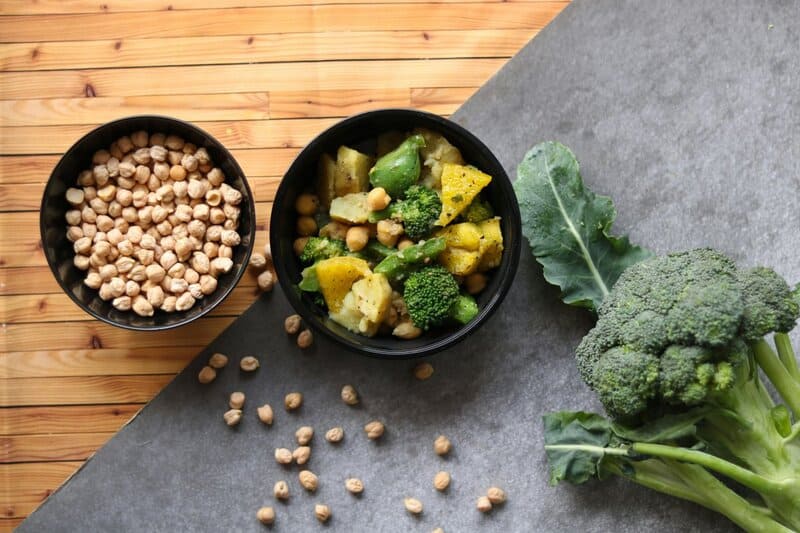
For a vibrant, heart-healthy lunch or side, quinoa and black bean salad stands out as a nutritional powerhouse.
Quinoa is a complete protein, delivering all nine essential amino acids, and is also high in fiber, which supports healthy cholesterol and blood sugar levels.
Black beans add even more fiber and plant-based protein, as well as potassium and magnesium—minerals known to help regulate blood pressure and support heart function.
Compared to traditional pasta salads, which often rely on refined grains and heavy dressings, this salad offers a lighter, more nutrient-dense alternative.
Adding colorful bell peppers brings a crisp texture and a dose of vitamin C, while fresh cilantro brightens every bite and adds a burst of flavor.
A simple olive oil and lime juice dressing keeps things heart-friendly without sacrificing taste.
The Harvard Healthy Eating Plate encourages making whole grains and plant foods the stars of your meals.
This quinoa and black bean salad fits perfectly within that guidance, offering a delicious way to enjoy a satisfying meal that supports long-term cardiovascular health.
4. Roasted Veggie and Chickpea Buddha Bowl
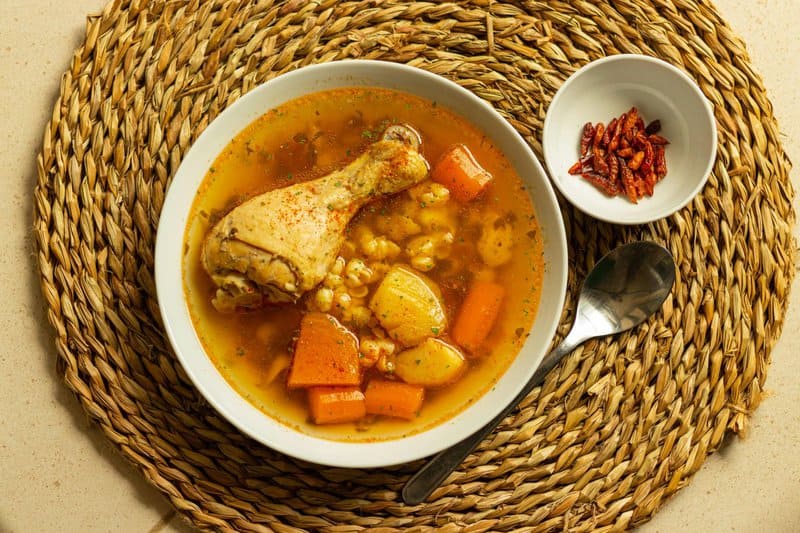
A Roasted Veggie and Chickpea Buddha Bowl is a feast for both the eyes and the heart.
By combining a variety of colorful vegetables—such as sweet potatoes, carrots, broccoli, and red onions—you create a nutrient-dense meal packed with vitamins, minerals, and fiber.
Chickpeas, a staple in heart-healthy eating, contribute plant-based protein and soluble fiber that supports healthy cholesterol levels and digestive wellness.
The vibrant hues of assorted vegetables are more than just beautiful; they signal the presence of powerful antioxidants like beta-carotene, vitamin C, and flavonoids.
These nutrients work together to help protect blood vessels and reduce inflammation, which is essential for maintaining cardiovascular health.
Unlike fried veggie dishes, roasting uses minimal oil and allows natural flavors to develop without adding saturated fats or extra calories.
The CDC recommends making vegetables a central component of daily eating.
A Buddha bowl brimming with roasted veggies and chickpeas is a delicious, creative way to meet—and even exceed—those recommendations, while delighting your senses at every meal.
5. Spinach and Mushroom Frittata

A Spinach and Mushroom Frittata is a wonderful way to enjoy a protein-rich, heart-healthy meal at any time of day.
Spinach is loaded with potassium, folate, and dietary nitrates—all nutrients known to help maintain healthy blood pressure and improve overall cardiovascular function.
Mushrooms add depth of flavor, fiber, and antioxidants, making this dish as nourishing as it is delicious.
Unlike traditional quiches, which often rely on buttery crusts and heavy cream, a baked frittata uses little to no added fat and skips the crust entirely.
By baking instead of frying, you keep the dish lower in saturated fat, supporting healthy cholesterol levels and heart health.
Eggs, when enjoyed in moderation, can be part of a balanced diet for older adults. The Cleveland Clinic notes that up to seven eggs per week is generally safe for most healthy individuals.
A spinach and mushroom frittata is easy to prepare, customizable with your favorite herbs, and perfect served warm or cold.
It’s a satisfying, heart-smart choice that effortlessly upgrades your breakfast or brunch table.
6. Brown Rice and Lentil Pilaf
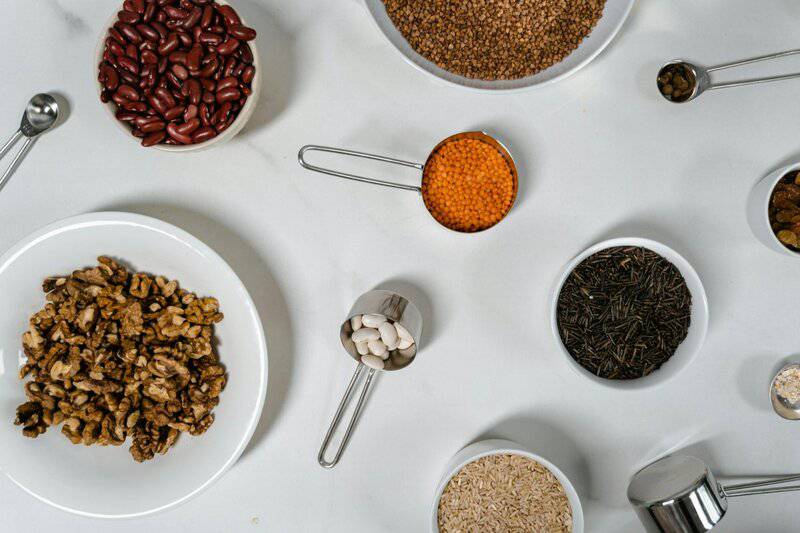
A hearty Brown Rice and Lentil Pilaf offers both comfort and powerful nutrition.
Brown rice is a whole grain, retaining its fiber-rich bran and germ, while lentils are packed with plant protein, fiber, and essential minerals like iron and magnesium.
Together, they create a dish that’s not only satisfying but also uniquely supportive of heart health.
The soluble fiber in lentils and brown rice helps regulate blood sugar and lowers LDL cholesterol, making this pilaf a smart alternative to white rice, which lacks fiber and can cause spikes in blood sugar.
Lentils, as part of the pulse family, have been shown to benefit cardiovascular health by promoting fullness and providing key nutrients for vascular function.
Season your pilaf with herbs like parsley or cumin, and toss in diced onions or carrots for extra flavor and nutrition.
Unlike white rice-based dishes, this version is heart-friendly, keeping you fuller for longer and supporting steady energy.
Brown rice and lentil pilaf is a simple, delicious way to make every meal a step toward better cardiovascular wellness.
7. Baked Cod with Tomatoes and Olives

For a light and flavorful dinner, Baked Cod with Tomatoes and Olives is an excellent heart-healthy option.
Cod is a lean white fish, low in fat yet rich in high-quality protein, making it ideal for those looking to protect cardiovascular health without excess calories.
The British Heart Foundation encourages including a variety of fish—especially baked or grilled—rather than relying on fried options.
Baking cod preserves its delicate texture with little or no added fat.
Layering the fish with juicy tomatoes provides a boost of lycopene, an antioxidant shown to help lower blood pressure and protect blood vessels.
Kalamata or green olives lend a Mediterranean flair while supplying heart-healthy monounsaturated fats and anti-inflammatory polyphenols.
Unlike breaded and fried fish, which adds saturated fat and calories, baking cod with tomatoes and olives keeps the dish light, nourishing, and bursting with flavor.
Serve with a sprinkle of fresh herbs such as basil or parsley for a meal that’s as elegant as it is good for your heart.
8. Avocado Toast on Whole Grain Bread

A slice of Avocado Toast on Whole Grain Bread isn’t just trendy—it’s a heart-smart way to start your day or enjoy a savory snack.
Avocado is rich in monounsaturated fats, which help raise HDL (“good”) cholesterol while lowering LDL (“bad”) cholesterol, supporting overall cardiovascular wellness.
The Harvard T.H. Chan School of Public Health highlights the benefits of healthy fats like those found in avocado as part of a balanced diet.
Swapping buttered toast for creamy avocado on whole grain bread means you’re also getting a significant boost of dietary fiber, which is essential for maintaining healthy blood pressure and cholesterol.
Whole grain bread provides complex carbohydrates, vitamins, and minerals for lasting energy and heart health.
For extra flavor and nutrition, top your toast with sliced tomatoes for added antioxidants or sprinkle on seeds such as chia or sunflower for crunch and extra plant-based nutrients.
This simple, delicious dish is proof that eating heart-healthy doesn’t mean sacrificing taste or satisfaction.
9. Greek Yogurt Parfait with Flaxseed and Kiwi

A Greek Yogurt Parfait with Flaxseed and Kiwi is a refreshing way to enjoy a nutrient-dense treat that feels indulgent yet supports heart health.
Greek yogurt is an excellent source of protein and calcium, helping to maintain muscle mass and bone strength as we age.
Choosing low-fat or nonfat varieties aligns with the NIH’s dairy recommendations for older adults.
Flaxseed is a nutritional superstar, loaded with plant-based omega-3 fatty acids and soluble fiber—both of which have been shown to lower cholesterol and reduce inflammation.
Kiwi slices add a bright, tangy flavor along with a dose of vitamin C, which plays a key role in protecting blood vessels and supporting immune health.
Unlike sugar-heavy desserts or breakfast options, this parfait is naturally sweet, thanks to fresh fruit, and provides lasting satisfaction without excess calories or added sugars.
Layer the yogurt, flaxseed, and kiwi for a visually appealing, delicious, and heart-smart snack or breakfast.
Each spoonful delivers a blend of creaminess, crunch, and refreshing fruit—proof that healthy eating can truly delight the senses.
10. Vegetable Stir-Fry with Tofu and Brown Rice
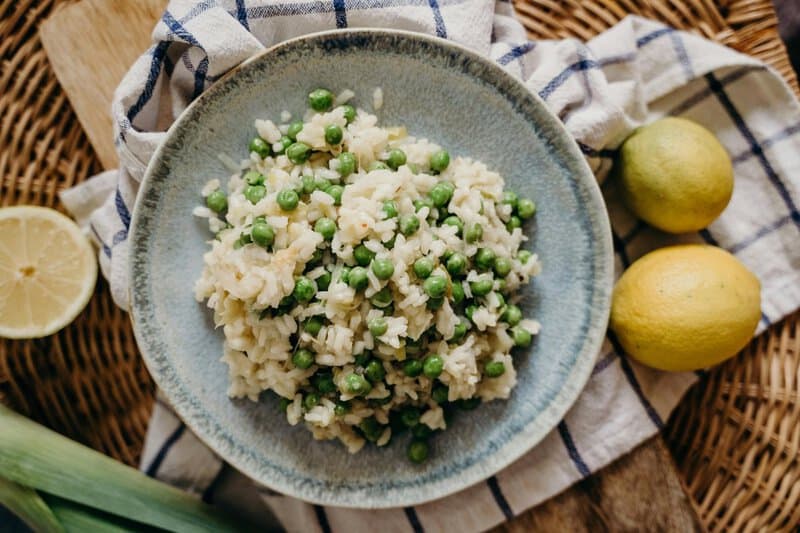
A Vegetable Stir-Fry with Tofu and Brown Rice is a colorful, satisfying meal that’s as good for your heart as it is for your taste buds.
Tofu, made from soybeans, provides high-quality plant protein and is naturally low in saturated fat and cholesterol.
A vibrant mix of vegetables—think bell peppers, snap peas, broccoli, and carrots—offers a spectrum of antioxidants, vitamins, and minerals that support healthy blood vessels and reduce inflammation.
For cooking, opt for a splash of olive oil, which adds heart-healthy monounsaturated fats, and use low-sodium soy sauce to keep sodium intake in check.
This is in line with the American Heart Association’s sodium guidelines, which recommend limiting sodium to help manage blood pressure and reduce heart disease risk.
Unlike takeout stir-fries, which can be high in unhealthy fats and salt, this homemade version gives you complete control over ingredients while delivering bold Asian-inspired flavors.
Serve over brown rice for extra fiber and a wholesome, filling meal—a perfect blend of nutrition, color, and taste for heart-conscious diners.
11. Hearty Minestrone Soup

A steaming bowl of Hearty Minestrone Soup brings together a medley of vegetables, beans, and whole grains for a meal that’s warming, filling, and wonderfully beneficial for heart health.
Vegetable-rich soups like minestrone offer a flavorful way to increase your daily intake of vitamins, minerals, and antioxidants, which support strong blood vessels and a healthy cardiovascular system.
The addition of beans, such as cannellini or kidney beans, provides both protein and soluble fiber—crucial nutrients for lowering cholesterol and promoting steady blood sugar.
Tossing in whole grain pasta or brown rice boosts the fiber content even more, helping you feel satisfied while supporting digestive and heart health.
Unlike cream-based soups, which are often high in saturated fat and calories, minestrone relies on tomato broth and olive oil for deep, savory flavor without compromising on nutrition.
The MedlinePlus soup recipes offer more ideas for crafting healthy, hearty soups at home.
Each spoonful of this classic Italian soup is packed with goodness, making it a comforting and heart-smart choice for any lunch or dinner.
12. Baked Sweet Potato with Black Bean Salsa

A Baked Sweet Potato with Black Bean Salsa is a colorful, hearty dish that brings together the best of nutrition and comfort.
Sweet potatoes are packed with vitamins A and C, potassium, and fiber, supporting healthy blood pressure and immune function.
According to the USDA, sweet potatoes are a nutrient-dense staple that can easily fit into a heart-healthy eating plan.
Topping your baked sweet potato with a black bean salsa adds plant-based protein, more fiber, and a satisfying texture.
Black beans also supply folate and magnesium, nutrients that play a vital role in cardiovascular health.
For extra flavor, try mixing in diced tomatoes, red onion, bell peppers, fresh cilantro, or a squeeze of lime—there are endless ways to customize your salsa for variety and taste.
This combination is a smart, health-conscious alternative to traditional loaded baked potatoes, which often feature butter, cheese, and bacon.
A baked sweet potato with black bean salsa is just as filling, but lighter and better for your heart.
It’s a vibrant, easy-to-make meal that’s as delicious as it is nourishing.
13. Poached Pears with Cinnamon and Walnuts

Poached Pears with Cinnamon and Walnuts offer a naturally sweet, elegant dessert that’s perfect for anyone focused on heart health.
Pears are naturally rich in fiber and vitamin C, and their gentle sweetness shines through when poached with a touch of water and cinnamon—no need for added sugar.
Cinnamon not only adds warm, comforting flavor but may also help support healthy blood sugar levels.
A sprinkle of walnuts gives this dessert a delightful crunch and a generous dose of plant-based omega-3 fatty acids, which are well-known for their ability to help lower cholesterol and reduce inflammation.
This combination makes for a satisfying treat that feels indulgent but is kind to your heart and waistline.
Unlike traditional desserts loaded with refined sugar and saturated fat, poached pears with cinnamon and walnuts are both light and nourishing.
For more ideas, the Mayo Clinic’s heart-healthy dessert recipes provide wonderful inspiration.
This dessert is easy to prepare, beautiful to serve, and a delicious way to end any meal on a heart-smart note.
14. Mediterranean Chickpea and Tomato Stew

A warming Mediterranean Chickpea and Tomato Stew is a delicious way to embrace the heart-protective power of the Mediterranean diet.
Chickpeas are rich in soluble fiber, which helps lower cholesterol, and provide plant-based protein for lasting energy.
The stew’s base of tomatoes offers antioxidants like lycopene, further supporting vascular health.
Unlike meat-heavy stews, which can be high in saturated fat and sodium, this Mediterranean-inspired dish features olive oil, garlic, and a medley of herbs such as oregano and basil.
These ingredients add both flavor and anti-inflammatory benefits, while hearty chickpeas provide bulk and satisfaction without the need for excess meat.
The American Heart Association highlights the Mediterranean diet as one of the best eating patterns for heart health, thanks to its focus on beans, vegetables, olive oil, and whole grains.
Enjoy this stew with a side of whole grain bread or a sprinkle of fresh parsley.
It’s a simple, comforting meal that supports cardiovascular wellness while celebrating the bright, robust flavors of the Mediterranean region.
15. Broiled Trout with Lemon and Herbs

A plate of Broiled Trout with Lemon and Herbs is a superb way to enjoy the heart benefits of omega-3-rich fish in a light, flavorful meal.
Trout is abundant in healthy omega-3 fatty acids, which have been shown to lower triglycerides, reduce inflammation, and help protect against heart disease.
According to NIH nutrition data, regularly including fatty fish like trout in your diet can be a powerful strategy for cardiovascular wellness.
Broiling is a fast, healthy cooking method that uses intense heat from above, allowing the natural flavors of trout—and any herbs you add—to shine through without excess oil.
A simple combination of lemon juice, fresh parsley, dill, or thyme elevates the dish, adding bright, aromatic notes while keeping calories low.
Unlike breaded fish sticks or fried seafood, broiled trout contains far less saturated fat and sodium, making it a much wiser choice for heart health.
Serve with steamed vegetables or a whole grain side for a meal that is as easy to prepare as it is nutritious.
16. Whole Grain Pasta Primavera

A colorful bowl of Whole Grain Pasta Primavera is a celebration of heart-healthy ingredients and vibrant flavors.
Whole grain pasta is an excellent source of fiber, B vitamins, and minerals, making it a superior alternative to refined pasta for supporting healthy cholesterol and steady blood sugar.
The Harvard T.H. Chan School of Public Health emphasizes the value of whole grains as a foundation for long-term wellness.
Adding a variety of seasonal vegetables—such as zucchini, bell peppers, cherry tomatoes, and asparagus—delivers an array of antioxidants and plant nutrients that promote strong blood vessels and overall heart health.
These veggies also add color and texture, making each bite both satisfying and visually appealing.
Instead of heavy, cream-based sauces, opt for a light olive oil and garlic dressing, which coats the pasta and vegetables with heart-healthy monounsaturated fats and robust flavor.
Sprinkle with fresh basil or parsley for a final burst of freshness.
Whole grain pasta primavera is proof that nutritious meals can be both wholesome and utterly delicious.
17. Roasted Beet and Walnut Salad
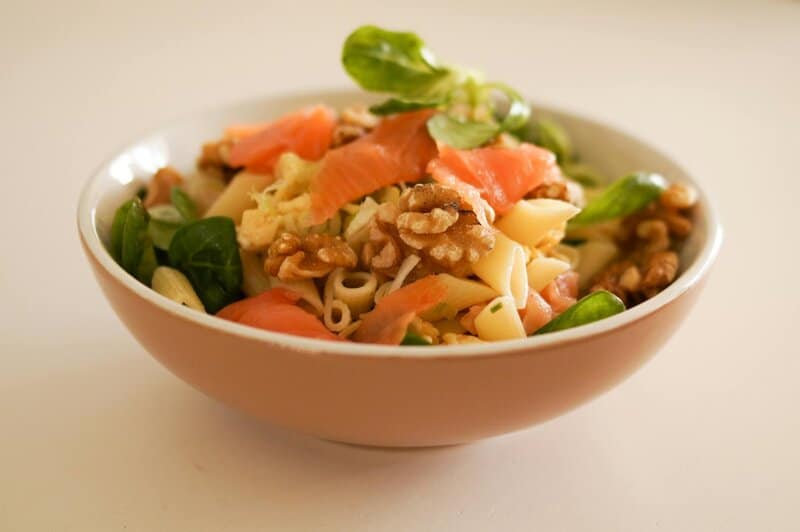
A Roasted Beet and Walnut Salad is a striking, nutrient-packed dish that brings together the earthy sweetness of beets and the satisfying crunch of walnuts.
Beets are loaded with antioxidants, especially betalains, which help reduce inflammation and may support lower blood pressure.
They’re also rich in folate and fiber, making them an excellent choice for heart health.
For more about the benefits of beets, see the Cleveland Clinic’s beet nutrition guide.
Walnuts provide a generous dose of alpha-linolenic acid (ALA), a plant-based omega-3 fatty acid that supports healthy cholesterol levels and reduces inflammation.
Tossing roasted beets and walnuts together creates a salad that’s both luxurious and heart protective.
Unlike salads drenched in heavy, creamy dressings, this salad shines with a simple vinaigrette—olive oil, balsamic vinegar, and a touch of Dijon mustard add zest and depth without unnecessary saturated fat.
Top with fresh herbs like parsley or arugula for an extra burst of flavor and color.
It’s a beautiful, satisfying salad you’ll want to savor again and again.
18. Zucchini Noodles with Pesto
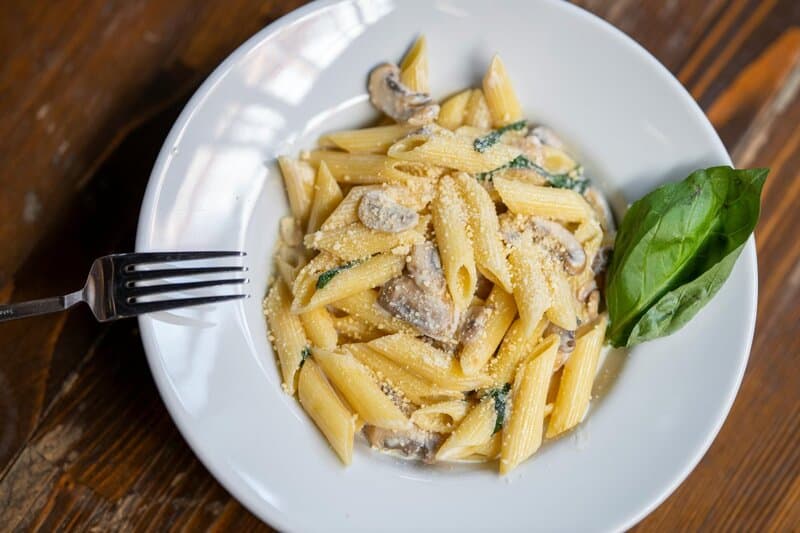
Zucchini Noodles with Pesto offer a light and refreshing twist on traditional pasta dishes, making them a fantastic option for those seeking a lower-carb, heart-friendly meal.
Zucchini noodles—often called “zoodles”—are naturally low in calories and carbohydrates but high in water, vitamins, and antioxidants that support vascular health and healthy blood pressure.
Homemade pesto, made with fresh basil, garlic, and heart-healthy olive oil, is an aromatic, flavorful sauce that brings the dish together.
Olive oil is rich in monounsaturated fats, known for their benefits in raising good cholesterol (HDL) and reducing inflammation.
You can also mix in walnuts or pine nuts to further boost the nutritional value and texture of your pesto.
Compared to traditional wheat noodles, zucchini noodles keep the dish lighter and easier to digest, while still offering plenty of satisfaction and flavor.
The Mayo Clinic’s low-carb recipes highlight the benefits of incorporating more vegetables into your meals.
Top your zoodles with a sprinkle of Parmesan or cherry tomatoes for extra color and taste.
It’s a simple, vibrant dish that’s perfect for heart-healthy eating.
19. Spiced Lentil and Carrot Soup

A comforting bowl of Spiced Lentil and Carrot Soup is a nourishing way to warm up while caring for your heart.
Carrots are loaded with beta-carotene, a powerful antioxidant that helps protect blood vessels and supports healthy vision.
Lentils add a hearty dose of plant-based protein and soluble fiber, which work together to lower cholesterol and promote steady blood sugar levels.
This soup features a blend of warming spices—such as cumin, coriander, and turmeric—which not only add rich flavor but may also help reduce inflammation.
Unlike cream-based soups, which can be heavy in saturated fat and calories, this recipe uses a vegetable broth base, making it both light and deeply satisfying.
A spiced lentil and carrot soup is easy to prepare ahead and keeps well for several days, making it a handy staple for heart-healthy meal planning.
For inspiration, check out the MedlinePlus lentil soup recipe, which features similar wholesome ingredients.
Each spoonful is packed with nutrition, flavor, and comfort—proof that simple ingredients can create truly delicious, heart-smart meals.
20. Sardine Salad with Arugula and Lemon
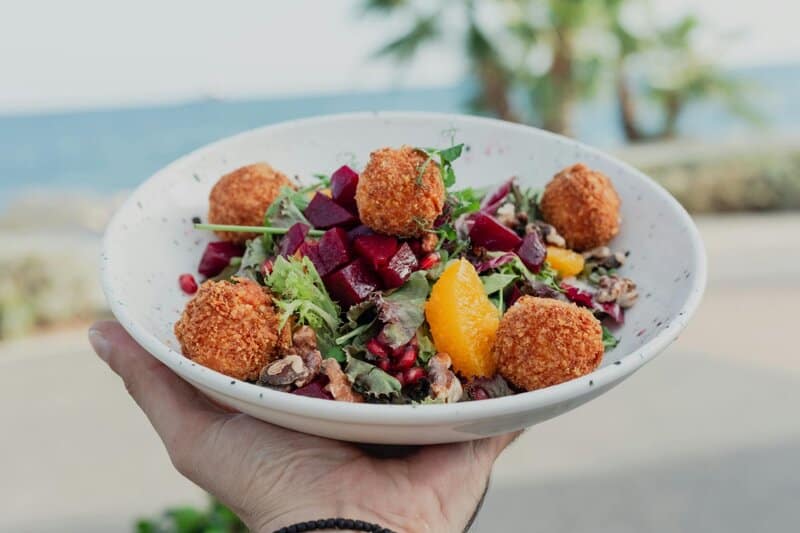
A vibrant Sardine Salad with Arugula and Lemon is an exceptional choice for heart-healthy dining, delivering a wealth of nutrition in every bite.
Sardines are one of the richest sources of omega-3 fatty acids, which help reduce inflammation and support healthy cholesterol levels.
They’re also naturally high in calcium, beneficial for maintaining strong bones as we age.
Arugula, with its peppery flavor, is packed with antioxidants and phytonutrients that help protect blood vessels and keep the cardiovascular system in top shape.
A squeeze of fresh lemon brightens the salad, adding vitamin C and enhancing the absorption of nutrients.
Unlike traditional tuna salad—often made with mayonnaise and added salt—this salad is light, fresh, and low in unhealthy fats.
A simple drizzle of olive oil and a sprinkle of cracked pepper are all you need to bring the flavors together.
For more on making the most of fish in your diet, explore Harvard’s fish recommendations.
Enjoy this salad as a quick lunch or dinner, knowing it’s as nourishing as it is delicious.
21. Barley and Vegetable Casserole
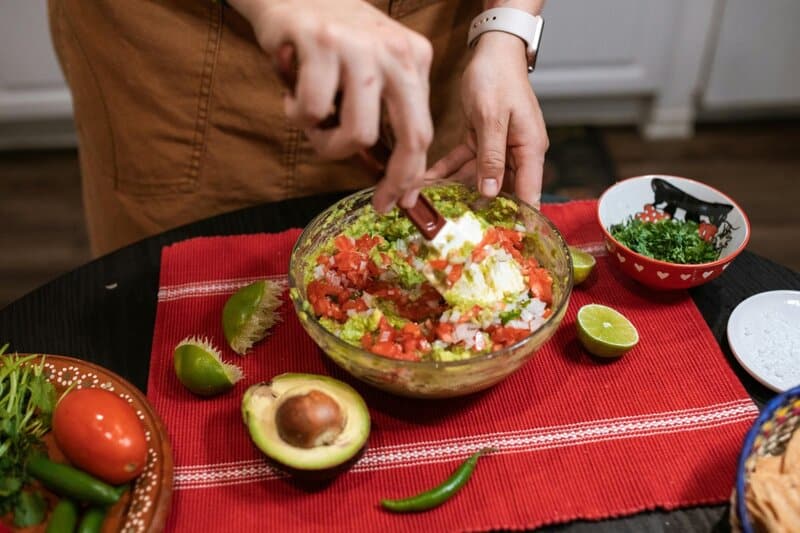
A comforting Barley and Vegetable Casserole is a standout choice for heart-healthy, satisfying meals.
Barley is a whole grain renowned for its high content of soluble fiber, which helps lower LDL cholesterol and improve overall cardiovascular health.
The American Heart Association encourages regular consumption of whole grains like barley to support heart wellness and digestive health.
This casserole bursts with a variety of colorful vegetables—think carrots, peas, spinach, and bell peppers—each adding unique antioxidants, vitamins, and minerals.
Together, barley and veggies create a dish that is filling, nourishing, and naturally low in saturated fat.
Compared to classic casseroles made with white rice and creamy sauces, this version is much higher in fiber and lower in unhealthy fats.
A simple seasoning of herbs, garlic, and a splash of low-sodium broth lets the natural flavors shine without relying on extra salt or cheese.
Barley and vegetable casserole is perfect for batch cooking and makes hearty leftovers—a delicious way to bring more whole grains and plant foods into your heart-healthy routine.
22. Chicken and Vegetable Skewers

Chicken and Vegetable Skewers are a fresh, colorful way to put lean protein and heart-healthy vegetables at the center of your plate.
Skinless chicken breast is naturally low in saturated fat while providing high-quality protein for muscle and tissue repair.
Thread on a rainbow of vegetables—like zucchini, cherry tomatoes, bell peppers, and red onions—for a vibrant array of antioxidants and natural flavors.
Instead of relying on salty marinades, try using a blend of herbs such as rosemary, thyme, garlic, and a splash of lemon juice.
These seasonings add bold flavor without the extra sodium, aligning with CDC’s grilling guidelines for healthy outdoor cooking.
Grilling is a heart-smart cooking method that enhances natural flavors without added fats or oils.
Unlike fried or breaded chicken, grilled skewers keep your meal light while still delivering satisfying taste and texture.
Serve your skewers with a side of whole grains or a leafy salad for a complete, balanced meal.
This simple dish is perfect for gatherings, quick dinners, or anytime you want a flavorful meal that supports your heart.
23. Pumpkin and White Bean Soup

Pumpkin and White Bean Soup is a creamy, comforting option that’s perfect for heart-healthy eating—without the need for heavy cream or butter.
Pumpkin is rich in vitamins A and C, potassium, and fiber, nutrients that help support healthy blood pressure, immune function, and vision.
White beans bring plant-based protein and soluble fiber, both of which are key for lowering cholesterol and promoting fullness.
Instead of cream, this soup gets its velvety texture from pureed pumpkin and beans, combined with a splash of low-sodium broth.
For flavor, add warming spices like cumin, nutmeg, and a hint of smoked paprika, which create depth and aroma without extra saturated fat.
Unlike traditional bisques, which often rely on heavy dairy, this soup is naturally low in fat and calories but rich in flavor and nutrition.
You can find more inspiration and creative ways to use pumpkin in heart-healthy meals from Nutrition.gov’s pumpkin recipes.
A bowl of pumpkin and white bean soup is both satisfying and easy to prepare—a delicious way to add more vegetables and fiber to your diet, especially during the cooler months.
24. Grilled Eggplant with Tahini Sauce
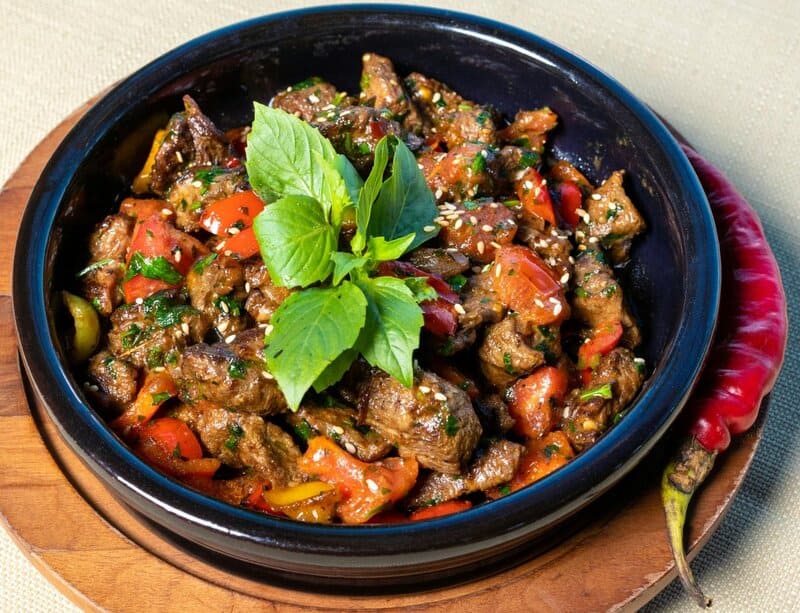
Grilled Eggplant with Tahini Sauce is a Mediterranean-inspired dish that’s both heart-healthy and full of flavor.
Eggplant is rich in antioxidants, especially nasunin, which helps protect cell membranes from damage and supports blood vessel health.
Its meaty texture makes it a satisfying main or side without the need for heavy ingredients.
Tahini, made from ground sesame seeds, is a source of healthy monounsaturated and polyunsaturated fats, which support healthy cholesterol levels and provide a creamy, nutty flavor.
A drizzle of lemon juice and garlic in the tahini sauce brightens the dish and adds a boost of vitamin C.
Grilling eggplant brings out its natural sweetness and smoky undertones, all while using far less oil than frying—a method that can add unnecessary saturated fats and calories.
For more inspiration, check out the Mayo Clinic’s eggplant recipes.
Pair grilled eggplant and tahini sauce with fresh herbs or a sprinkle of pomegranate seeds for extra color and nutrition.
It’s a simple, elegant way to enjoy vegetables and healthy fats in one satisfying dish.
25. Berry and Almond Breakfast Smoothie

A refreshing Berry and Almond Breakfast Smoothie is a fast, delicious way to jump-start your morning while caring for your heart.
Berries—such as strawberries, blueberries, and raspberries—are loaded with antioxidants, including vitamin C and anthocyanins, which help fight inflammation and support healthy blood vessels.
Adding a handful of almonds or a spoonful of almond butter infuses the smoothie with heart-healthy monounsaturated fats, vitamin E, and plant protein.
These nutrients help lower bad cholesterol and keep you feeling full and energized.
For creaminess and extra protein, use unsweetened Greek yogurt or milk, which also helps keep added sugar to a minimum.
Unlike many commercial bottled smoothies, which often contain hidden sugars and artificial ingredients, this homemade version is pure, wholesome, and easy to tailor to your taste.
The American Heart Association’s smoothie tips encourage using whole fruits, healthy fats, and low or no added sugars for the best nutrition.
Enjoy your berry and almond breakfast smoothie as a satisfying meal or snack—a simple, tasty way to support your heart every day.
26. Turkey and Vegetable Chili
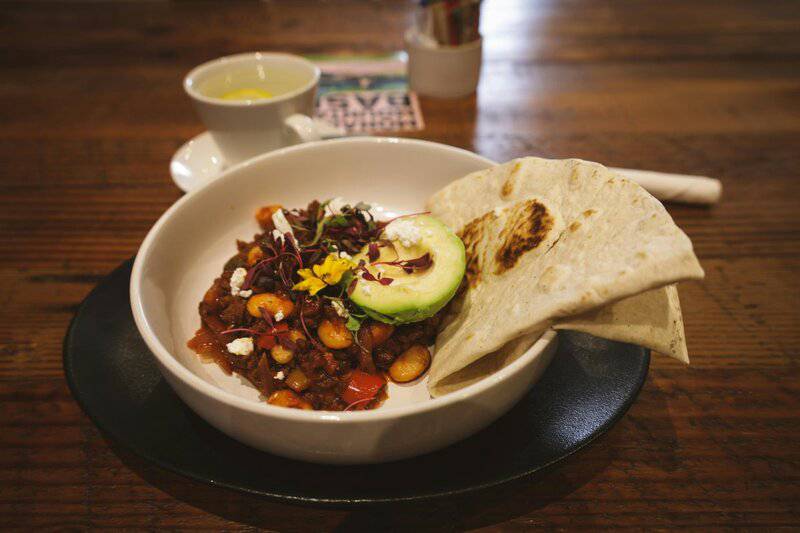
A hearty Turkey and Vegetable Chili is a perfect example of how comfort food can be both satisfying and heart-healthy.
Lean ground turkey provides high-quality protein with far less saturated fat than traditional beef, making it a smart choice for those seeking to protect their cardiovascular health.
This chili is packed with beans—such as kidney, black, or pinto beans—which add fiber and plant protein to help lower cholesterol and keep you feeling full.
A generous mix of colorful peppers, tomatoes, and onions brings even more vitamins, antioxidants, and immune-boosting nutrients.
Compared to classic beef chili, this version is lighter but just as flavorful, with the added benefit of being lower in unhealthy fats.
You can customize your chili with a blend of spices like cumin, chili powder, and smoked paprika for bold taste without extra sodium or calories.
For more heart-smart ideas, see the CDC’s healthy chili recipe.
Enjoy turkey and vegetable chili on its own or over brown rice for a nourishing and satisfying meal that loves your heart back.
27. Cauliflower Rice Stir-Fry

A flavorful Cauliflower Rice Stir-Fry is an ingenious way to enjoy all the classic stir-fry flavors with fewer carbohydrates and calories.
Cauliflower rice is made by pulsing fresh cauliflower into tiny, rice-like pieces, providing a fiber-rich, low-carb base that’s naturally high in vitamin C and other antioxidants.
Add a vibrant mix of your favorite vegetables—like snap peas, carrots, bell peppers, and broccoli—for a variety of nutrients and crunch.
Incorporate a lean protein source such as tofu, shrimp, or skinless chicken breast to round out the meal, ensuring a satisfying and heart-healthy balance of protein, fiber, and essential vitamins.
Unlike traditional fried rice, which is often made with white rice and lots of oil, cauliflower rice stir-fry is much lower in calories and saturated fat.
A small amount of olive oil and a splash of low-sodium soy sauce or tamari keeps the dish flavorful without excess sodium or unhealthy fats.
For more creative ways to use cauliflower, explore the Mayo Clinic’s cauliflower recipes.
This stir-fry is perfect for busy weeknights, bringing nutrition, color, and taste to your heart-healthy table.
28. Apple and Walnut Chicken Salad

A refreshing Apple and Walnut Chicken Salad brings together lean protein, crunch, and natural sweetness in a heart-healthy way.
Skinless, cooked chicken breast is an excellent low-fat protein source, helping to support muscle and tissue health.
Crisp apple chunks add fiber, vitamin C, and a burst of sweetness, while walnuts provide a flavorful dose of plant-based omega-3 fatty acids that help reduce inflammation and promote healthy cholesterol levels.
To keep this salad light and nutritious, opt for a yogurt-based dressing made with low-fat Greek yogurt, a touch of Dijon mustard, and a squeeze of lemon juice.
This alternative offers creaminess and tang without the saturated fat and calories found in traditional mayonnaise-heavy chicken salads.
Mix in some celery, fresh herbs, or raisins for extra flavor and nutrition.
This salad is just as satisfying served on a bed of leafy greens as it is tucked into a whole grain pita.
For more creative, heart-friendly chicken salad ideas, check out Nutrition.gov’s chicken salad recipes.
Enjoy a meal that’s as nourishing as it is delicious, any time of day.
29. Baked Falafel with Tzatziki

Baked Falafel with Tzatziki is a wonderful plant-based meal that’s bursting with flavor and mindful of heart health.
Traditional falafel is fried, which adds unnecessary saturated fat, but baking falafel keeps them crispy on the outside and tender inside with far less oil.
The main ingredient, chickpeas, is rich in fiber and plant-based protein, supporting healthy cholesterol and digestive wellness.
Season your falafel with garlic, parsley, cumin, and coriander for bold, aromatic flavor.
Instead of a heavy sauce, serve your falafel with a refreshing tzatziki made from Greek yogurt, cucumber, fresh dill, and lemon juice.
This light, tangy sauce adds creaminess and cools the palate, all while providing extra protein and probiotics.
Compared to traditional fried falafel and rich sauces, this baked version is lower in calories and saturated fat, making it a smart choice for those seeking heart-friendly meals.
For more inspiration, see the Cleveland Clinic’s baked falafel recipe.
Enjoy baked falafel with tzatziki tucked into a whole grain pita or atop a crisp salad for a nourishing, satisfying meal that’s perfect any day of the week.
30. Shrimp and Avocado Salad
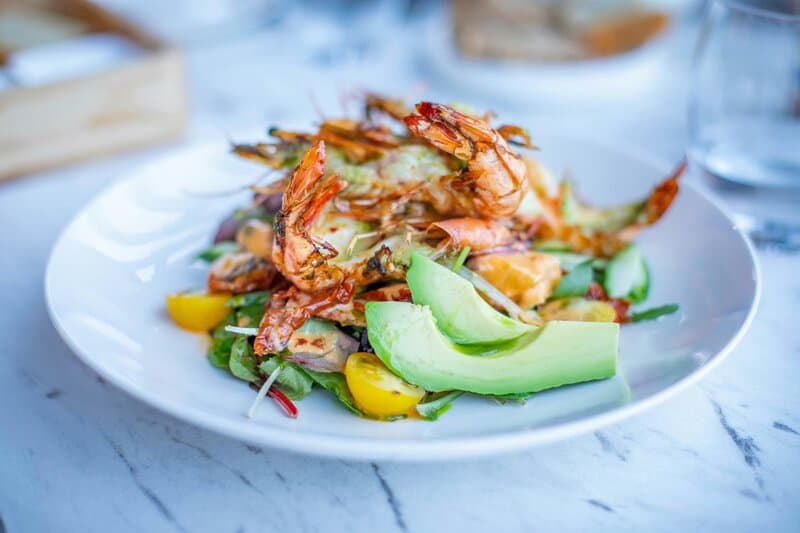
A Shrimp and Avocado Salad is the perfect marriage of lean protein, healthy fats, and vibrant flavors.
Shrimp is naturally low in calories and saturated fat, yet rich in high-quality protein and key nutrients like selenium and vitamin B12.
According to the American Heart Association’s shrimp nutrition overview, shrimp can be part of a heart-healthy diet when prepared without excess fat or sodium.
Avocado brings a creamy texture and a healthy dose of monounsaturated fats, which help support healthy cholesterol levels and protect against heart disease.
Toss in fresh greens, cherry tomatoes, and a squeeze of lime juice for brightness and an extra boost of vitamins and antioxidants.
Unlike creamy seafood salads made with mayonnaise or heavy dressings, this salad is naturally light, flavorful, and easy to prepare.
A simple vinaigrette of olive oil, lemon, and herbs enhances the freshness of each ingredient without overwhelming the palate.
Enjoy shrimp and avocado salad as a quick lunch or dinner—it’s a satisfying, heart-smart option that proves healthy eating can be both delicious and effortless.
31. Spaghetti Squash Marinara
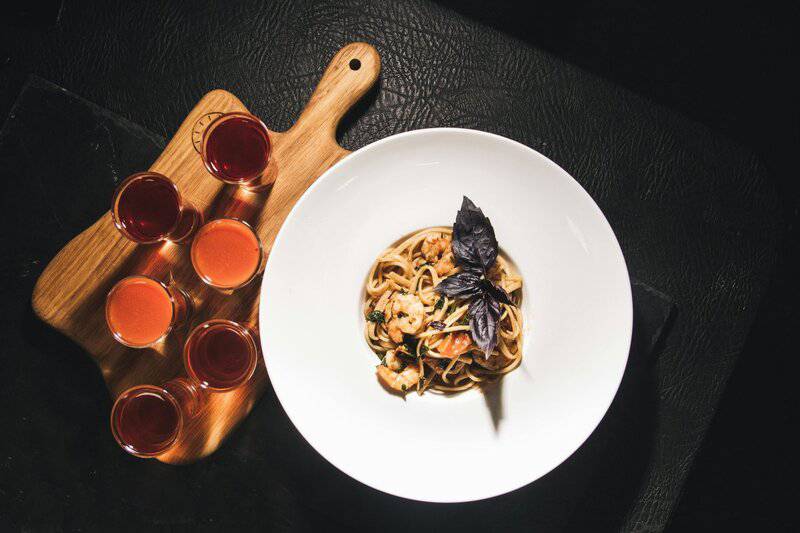
Spaghetti Squash Marinara is a delightful, low-carb twist on a classic Italian favorite that’s perfect for heart-healthy eating.
Spaghetti squash, once cooked, shreds easily into noodle-like strands, making it a naturally gluten-free and low-calorie base for your favorite sauces.
It’s packed with fiber, vitamin C, and potassium, all of which support cardiovascular wellness.
Top your squash “noodles” with a robust tomato marinara, rich in lycopene and antioxidants that help protect blood vessels and lower inflammation.
Add garlic, basil, oregano, and a sprinkle of red pepper flakes for extra flavor without relying on added fats or sodium.
You can even toss in sautéed mushrooms or spinach for added nutrition and color.
Compared to traditional pasta with meat sauce, this version is much lower in carbohydrates and saturated fat, yet just as satisfying and comforting.
For more inspiration on preparing squash-based meals, visit the Mayo Clinic’s squash recipes.
Spaghetti squash marinara is a wonderful way to enjoy Italian flavors while keeping your heart and waistline in mind—proof that healthy choices can still be delicious and fun.
32. Lentil and Spinach Stew

A hearty Lentil and Spinach Stew is a wonderful way to enjoy a plant-based meal that’s both comforting and packed with nutrients.
Lentils are rich in fiber, which can help lower cholesterol and support digestive health, and they’re also a great source of plant-based iron—essential for energy and oxygen transport in the body.
Spinach adds a bounty of vitamins A, C, and K, as well as folate and potassium, all of which are important for heart and overall health.
Flavor your stew with aromatic spices like cumin, turmeric, coriander, and a touch of smoked paprika.
These spices add depth and warmth without extra calories or sodium, elevating the natural flavors of the lentils and greens.
Unlike heavy, meat-based stews, this lentil and spinach version is low in saturated fat but still incredibly filling and satisfying.
Serve it with a chunk of whole grain bread or a side salad for a complete, heart-smart meal.
For more inspiration and a simple recipe, visit the MedlinePlus lentil stew recipe.
This stew is proof that wholesome, plant-based cooking can be both delicious and deeply nourishing.
33. Roasted Brussels Sprouts with Almonds

A tray of Roasted Brussels Sprouts with Almonds is a simple yet powerful addition to any heart-healthy menu.
Brussels sprouts are part of the cruciferous vegetable family and are loaded with fiber, vitamin C, vitamin K, and antioxidants that help reduce inflammation and support healthy blood vessels.
For more on their benefits, see the Cleveland Clinic’s Brussels sprouts nutrition guide.
Slicing and roasting Brussels sprouts brings out their natural sweetness and creates irresistibly crisp edges.
A drizzle of olive oil and a pinch of sea salt are all you need to enhance flavor without adding saturated fat.
Tossing in sliced almonds before the final minutes of roasting infuses the dish with heart-healthy monounsaturated fats, vitamin E, and a satisfying crunch.
This preparation is much healthier than butter-laden vegetables, offering all the flavor with none of the guilt.
Serve roasted Brussels sprouts with almonds as a side to any main course, or mix into salads and grain bowls for an extra boost of nutrition and taste.
34. Tomato and White Bean Ragout

A savory Tomato and White Bean Ragout is a comforting, plant-based dish that’s as nourishing as it is delicious.
White beans are packed with fiber, which helps lower cholesterol and keeps you feeling full and satisfied.
They’re also a great source of plant protein and minerals like magnesium and potassium, supporting healthy blood pressure and heart rhythm.
Tomatoes are rich in antioxidants, especially lycopene and vitamin C, which play a role in reducing inflammation and protecting blood vessel health.
Simmering the beans and tomatoes together with garlic, onions, and a sprinkle of herbs creates a hearty, flavorful ragout that’s perfect for any season.
Instead of a traditional meat ragout, this version is naturally low in saturated fat but still robust and satisfying.
Serve the ragout over a bed of whole grains such as brown rice, farro, or barley for an extra boost of fiber and sustained energy.
For more healthy bean-based meal inspiration, visit the American Heart Association’s bean recipes.
This ragout is proof that plant-forward dishes can be hearty, flavorful, and great for your heart.
35. Grilled Portobello Mushroom Burger

A Grilled Portobello Mushroom Burger is a satisfying, plant-based alternative to traditional hamburgers that delivers bold flavor and heart-smart nutrition.
Portobello mushrooms are naturally low in fat and calories, yet their meaty texture and rich umami taste make them a favorite among those looking to cut back on red meat.
They’re also a good source of antioxidants, B vitamins, and potassium, all beneficial for cardiovascular health.
Grilling the mushrooms brings out their smoky, savory notes without the need for extra oils or heavy sauces.
Serve your grilled Portobello on a toasted whole grain bun, which adds fiber and sustained energy, and pile on fresh toppings like lettuce, tomato, roasted red pepper, or a dollop of hummus for extra flavor and nutrients.
Compared to beef burgers, Portobello burgers are much lower in saturated fat and cholesterol, making them a wise choice for anyone focused on heart health.
For more ideas, visit the Mayo Clinic’s mushroom burger recipe.
Enjoy a delicious, guilt-free burger that proves you don’t have to sacrifice taste or satisfaction to eat for your heart.
36. Mango and Black Bean Salsa with Grilled Chicken

A vibrant Mango and Black Bean Salsa with Grilled Chicken combines sweet, savory, and tangy flavors for a meal that’s as nourishing as it is colorful.
Mango is loaded with vitamin C and antioxidants, which help support immune and vascular health.
Black beans provide a satisfying dose of plant-based protein, fiber, and minerals like magnesium and potassium—nutrients that are critical for maintaining a healthy heart.
Pairing this bright salsa with lean, skinless grilled chicken offers a filling, low-fat source of animal protein.
Grilling the chicken keeps the dish light by avoiding the excess fat and calories found in fried chicken preparations.
A sprinkle of fresh cilantro and a squeeze of lime juice add extra freshness and flavor, elevating the meal while keeping sodium to a minimum.
This heart-smart dish is a lively alternative to classic fried chicken with heavy sides, offering vibrant taste and nutrition without guilt.
For more creative salsa ideas, explore the CDC’s salsa recipes.
Mango and black bean salsa with grilled chicken is perfect for summer meals, picnics, or any time you crave something tasty, wholesome, and satisfying.
37. Baked Tilapia with Herbs and Lemon

A simple and elegant Baked Tilapia with Herbs and Lemon makes for a heart-healthy meal that’s easy for anyone to enjoy.
Tilapia is a lean white fish, naturally low in calories and saturated fat while providing a good amount of protein and essential nutrients like selenium and phosphorus.
Baking tilapia ensures it stays light and tender, with no need for added oils or heavy coatings.
Fresh herbs—such as parsley, dill, thyme, or basil—add a burst of flavor without the need for extra salt or sodium-heavy seasonings.
A generous squeeze of lemon juice provides a bright, tangy finish and a dose of vitamin C, elevating the natural flavors of the fish while supporting vascular health.
Compared to breaded and fried fish, which are often higher in saturated fat and calories, baked tilapia with herbs and lemon is much lighter and kinder to your heart.
This preparation is also quick and versatile, making it perfect for busy weeknights or when you want something fast and nutritious.
For more ideas and variations, visit Nutrition.gov’s tilapia recipes.
Enjoy a meal that’s fresh, flavorful, and supports your cardiovascular health.
38. Sweet Potato and Kale Hash

A satisfying Sweet Potato and Kale Hash is a wonderful way to start your day or enjoy a heart-healthy brunch.
Sweet potatoes are loaded with dietary fiber and complex carbohydrates, providing steady energy while supporting healthy digestion and cholesterol levels.
Kale brings a powerhouse of vitamins A, C, and K, as well as calcium and antioxidants that help protect blood vessels and promote strong bones.
Sauté diced sweet potatoes and chopped kale together in a small amount of heart-healthy olive oil, which adds flavor and beneficial monounsaturated fats.
A sprinkle of black pepper, a pinch of smoked paprika, and some diced red onion or bell pepper can boost both taste and nutrition, making this hash colorful and satisfying.
Unlike traditional breakfast hashes made with processed meats like bacon or sausage, this plant-forward version is naturally low in saturated fat and sodium.
It’s a filling, nutrient-rich dish that’s easy to prepare for any meal of the day.
For more ways to enjoy this super green, check out the American Heart Association’s kale recipes.
Sweet potato and kale hash proves that healthy can also be hearty and delicious.
39. Greek Chicken Souvlaki with Tzatziki

Greek Chicken Souvlaki with Tzatziki brings the sunny flavors of the Mediterranean to your kitchen in a heart-healthy way.
Chicken breast pieces are marinated in a blend of olive oil, lemon juice, garlic, oregano, and thyme, then threaded onto skewers and grilled until juicy and golden.
Grilling keeps the chicken lean and flavorful, infusing it with aromatic herbs without extra fat.
The classic accompaniment, tzatziki, is made from low-fat Greek yogurt, grated cucumber, fresh dill, and a hint of garlic and lemon.
This creamy, tangy sauce is naturally low in saturated fat and packs a protein punch, unlike heavier dairy-based or fried Greek dishes that can weigh down your meal.
Serve your souvlaki with whole grain pita and a fresh tomato-cucumber salad for a balanced, Mediterranean-inspired platter.
This dish stands out for its vibrant taste, lightness, and healthful ingredients.
For more heart-healthy Mediterranean meal ideas, visit the Mayo Clinic’s Mediterranean recipes.
Souvlaki with tzatziki is a crowd-pleaser that proves you can enjoy classic flavors the heart-smart way.
40. Overnight Chia Pudding with Berries

Overnight Chia Pudding with Berries is a delightful, make-ahead breakfast that’s brimming with nutrients for heart health.
Chia seeds are a rich source of plant-based omega-3 fatty acids, which support healthy cholesterol levels and reduce inflammation.
They’re also packed with soluble fiber, helping keep you full while supporting digestion and blood sugar control.
For more details about chia’s nutritional benefits, see the NIH’s chia seed information.
Layering chia pudding with a mix of antioxidant-rich berries—such as blueberries, raspberries, and blackberries—adds a burst of natural sweetness and color, along with immune-boosting vitamin C.
To prepare, simply soak chia seeds in unsweetened almond milk or another milk alternative overnight, allowing them to thicken into a pudding-like texture.
This keeps the dish low in saturated fat and added sugars, unlike traditional breakfast puddings or parfaits that often rely on syrups or sweetened yogurts.
Top your chia pudding with fresh berries in the morning for a refreshing, heart-smart breakfast or snack.
It’s a deliciously simple way to fuel your day while supporting your cardiovascular wellness.
Conclusion

Embracing heart-healthy eating after 60 can be a joyful and flavorful journey. This diverse collection of recipes proves that nourishing your heart doesn’t mean sacrificing taste or variety. By exploring new dishes and incorporating wholesome ingredients, you support both your well-being and your love of good food. Let these meals inspire you to savor every bite and celebrate the power of healthy, delicious choices—your heart will thank you for years to come!
Medical Disclaimer

This article is for informational purposes only and does not constitute medical advice. Always consult your doctor or a registered dietitian before making significant changes to your diet. Your health is unique—make choices that are right for you.





